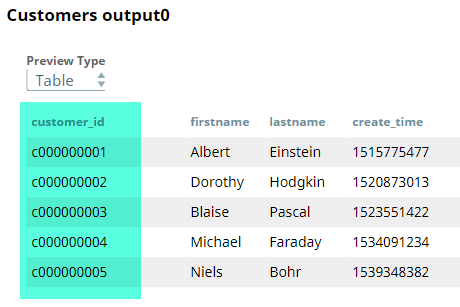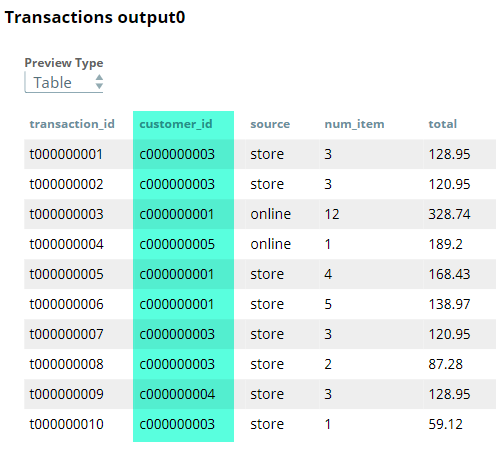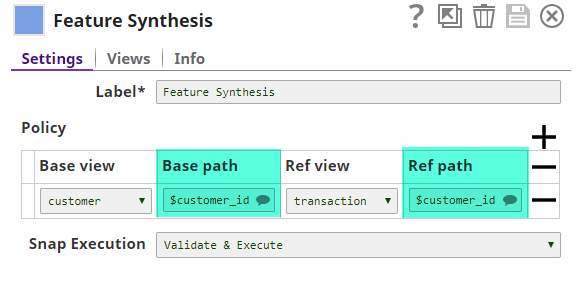On this Page
| Table of Contents | |||||
|---|---|---|---|---|---|
|
Overview
The Feature Synthesis Snap generates new features for a base or primary dataset by joining it with other datasets (reference datasets) linked together by common identifiers. Features are measurements of data points in a dataset. Using this Snap enables you to view statistical data of all related datasets in the base dataset itself. Categorical and numeric data will get different set of features. Some of the features generated are:
...
Input | This Snap has at least two document input views. |
|---|---|
| Output | This Snap has exactly one document output view. |
| Error | This Snap has at most one document error view. |
Troubleshooting
None.
Limitations and Known Issues
None.
Modes
- Ultra pipelinesPipelines: Does not work in Ultra pipelines.Spark mode: Does not work in Spark modePipelines.
Snap Settings
| Label | Required. The name for the Snap. You can modify this to be specific, especially if you have more than one of the same Snap in your pipeline. | ||||||||||
|---|---|---|---|---|---|---|---|---|---|---|---|
| Policy | Specify the base and reference datasets and fields. | ||||||||||
| Base view | The input view to which the base dataset is connected. Default value: input0 (name of the input view) | ||||||||||
| Base path | The field in the base dataset that is to be used as the base field. This has to be the common identifier for joining with the reference dataset. Example: $customer_id Default value: [None] | ||||||||||
| Ref view | View where the reference dataset is the input. Default value: input0 (name of the input view) | ||||||||||
| Ref path | The field in the reference dataset that is to be used. This field must have the same values as in the base field. Example: $customer_id Default value: [None] | ||||||||||
|
|
...
| Expand | ||
|---|---|---|
| ||
The base dataset in this example is a collection of customer records. It has the following fields:
The reference dataset is a collection of transactions made by the customers listed in the base dataset. It has the following fields:
Both datasets are provided by the CSV Generator Snaps titled Customers and Transactions. These are passed through a Type Converter Snaps so that all data types are mapped correctly. This is required to enable the Feature Synthesis Snap to generate features accurately. A preview of the customer and transaction datasets that are output by the CSV Generator Snaps is as shown below:
The field $customer_id is common between both datasets. The Feature Synthesis Snap will use this field to join datasets and is configured as shown below:
The customer dataset is connected to the first input view (titled customer); so this view becomes the Base view. Similarly, the transaction dataset is connected to the second input view (titled transaction); so that becomes the Ref view. Upon successful execution, the Feature Synthesis Snap generates features and adds them to the base dataset as shown below: The same output is shown in a JSON format to let you see the full list of features: Download this Pipeline. |
Downloads
| Multiexcerpt include macro | ||||
|---|---|---|---|---|
|
| Attachments | ||
|---|---|---|
|
Additional Resources
...
...
| Insert excerpt | ||||||
|---|---|---|---|---|---|---|
|




